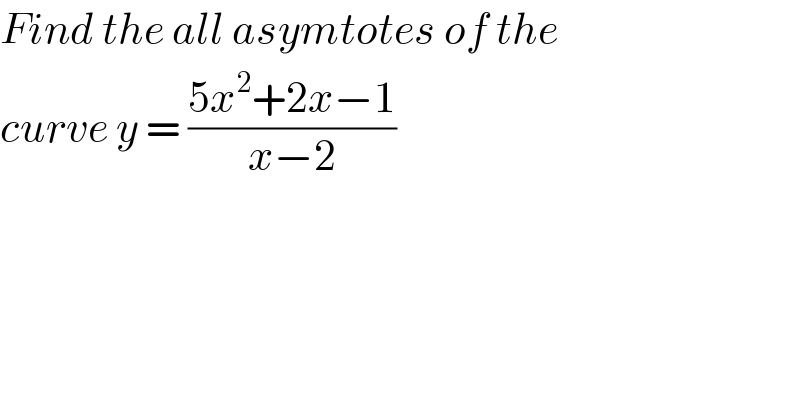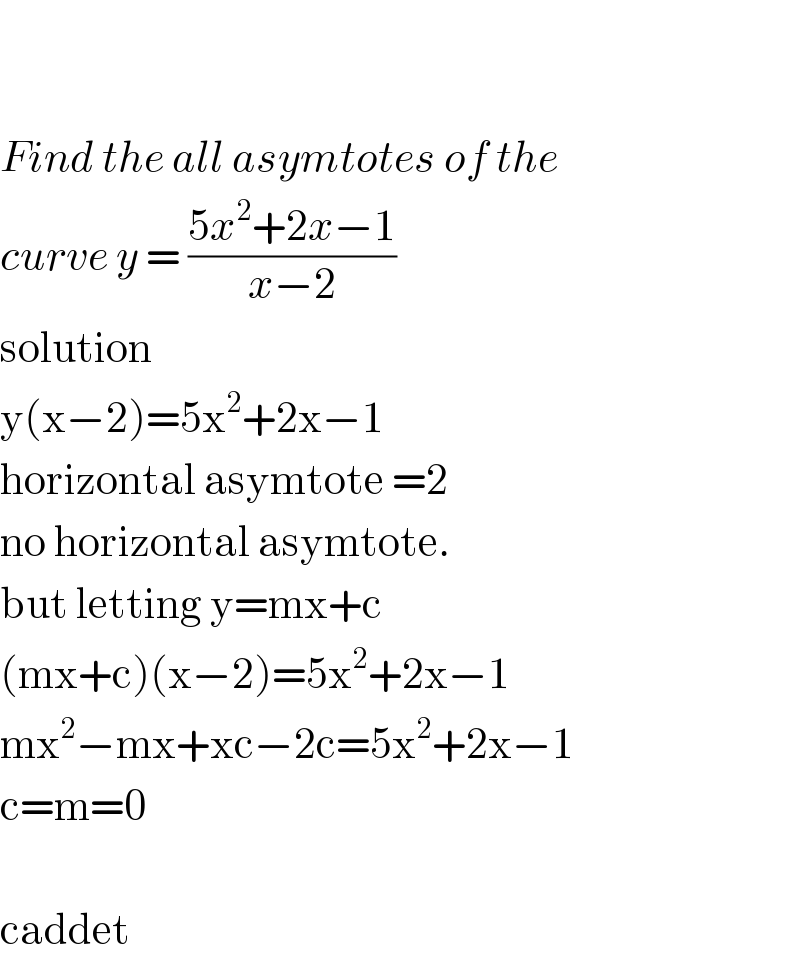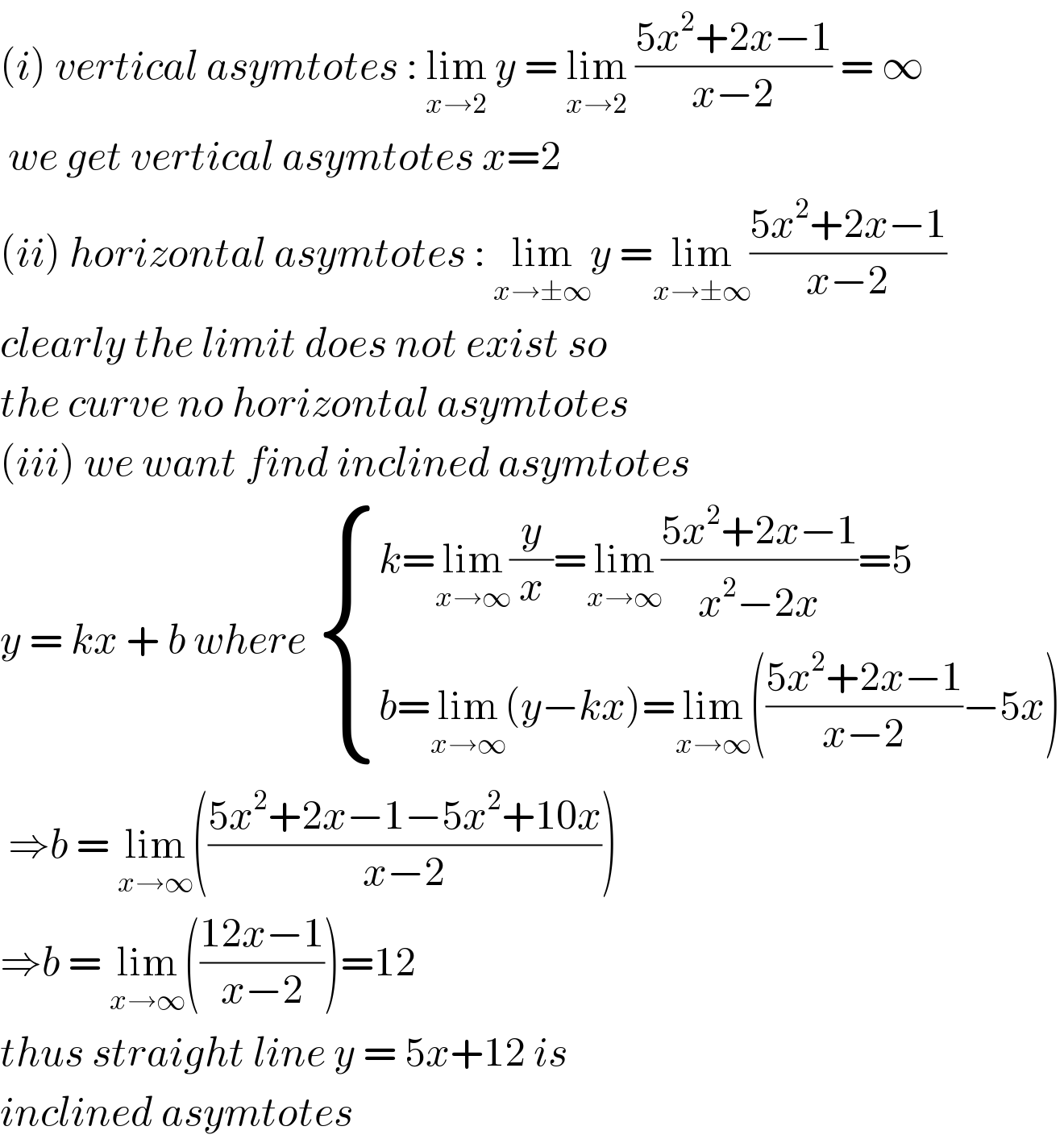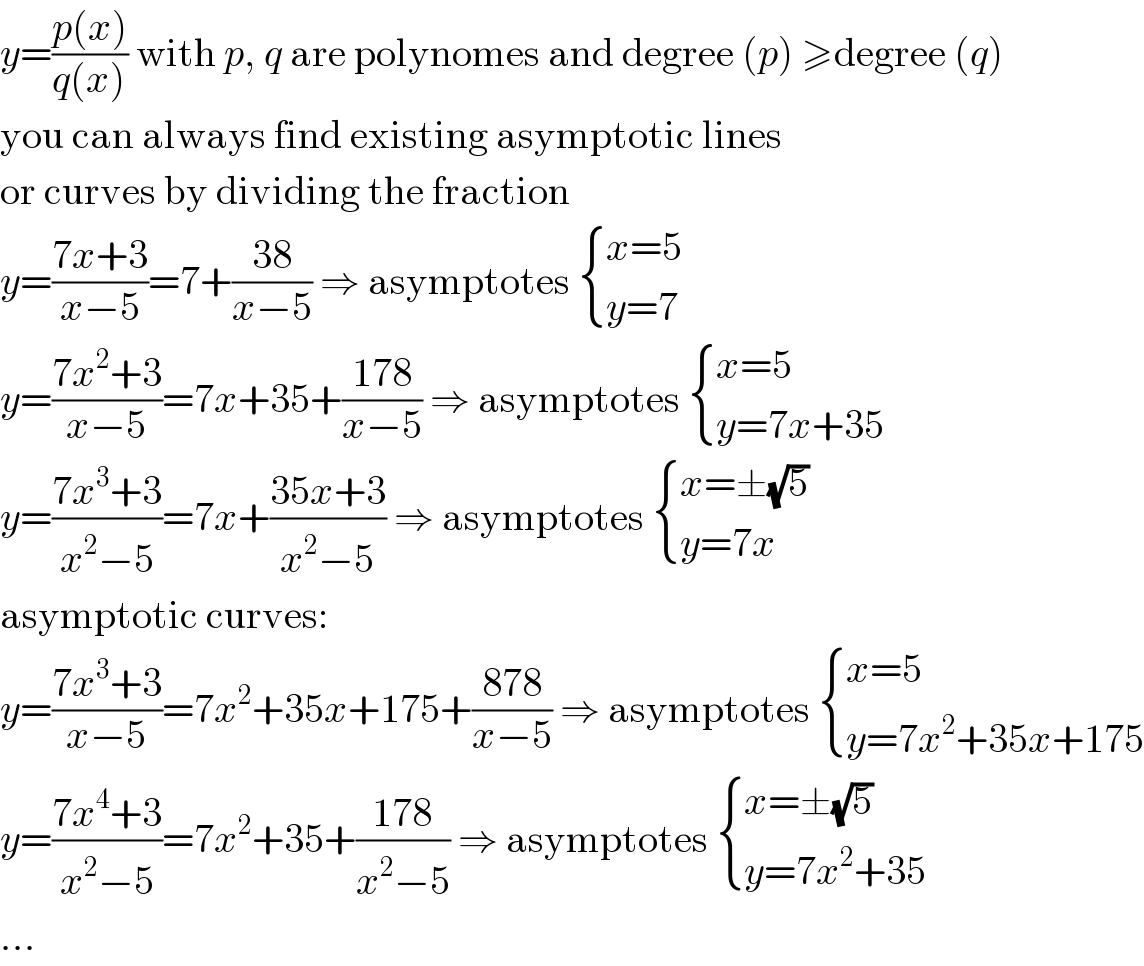
Question and Answers Forum
Question Number 123407 by bemath last updated on 25/Nov/20

Commented by EVIMENEBASSEY last updated on 25/Nov/20

Commented by liberty last updated on 25/Nov/20

Commented by MJS_new last updated on 25/Nov/20

Commented by bemath last updated on 25/Nov/20

Commented by bemath last updated on 25/Nov/20

Commented by MJS_new last updated on 25/Nov/20

Commented by bemath last updated on 25/Nov/20

Answered by MJS_new last updated on 25/Nov/20

